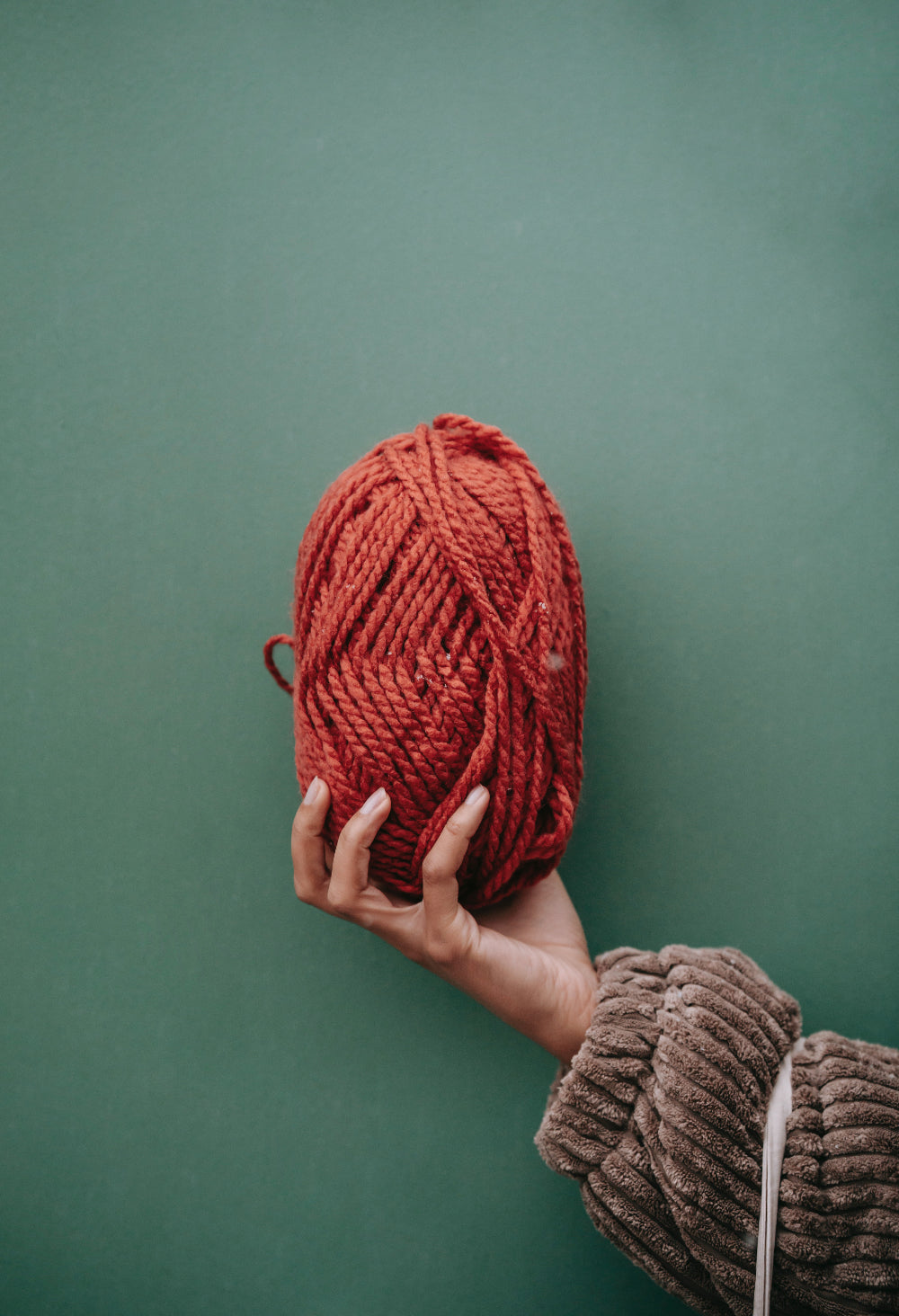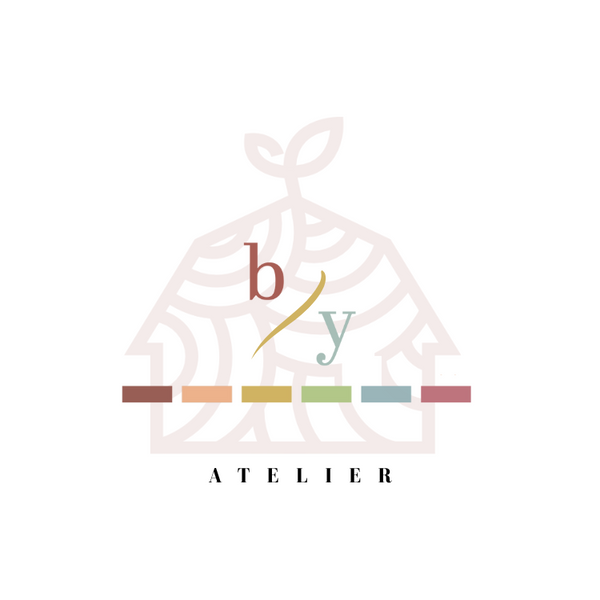
How Much Does That Yarn Weigh? Yes! It is polite to ask
Share
In the world of yarn, weight is an important consideration. It refers to how thick the strand of yarn is. The thickness of the yarn will have an effect on how many stitches you can create before your fabric reaches a certain unit of measure; often an inch. This is critical for determining your gauge, which we’ll talk about later, and for determining how many skeins to buy for your project.
Yarn comes in many different weights ranging from fine to bulky. According to the Craft Yarn Council, yarn weights have been standardized to offer some uniformity in the industry, which is great because you want predictable results. Not only that, but the Craft Yarn Council says the guidelines and symbols in your patterns have also been standardized! Standardization is important because it means designers and crafters are all speaking the same language, which increases our chances of success. You want to know if you buy a skein of bulky yarn for your hat that you can expect the result described in your pattern. Without standards, well, who knows what would happen!
Weight can be measure in terms of WPI, or wraps per inch. This method uses a tool to wrap the yarn around a 1-inch cut out. Thinner yarns result in more wraps; thicker will have fewer. The number of wraps-per-inch have been standardized for each weight. This can be tricky because tension becomes a factor with this method. The harder you pull the yarn, the thinner it is, which could falsely increase the wrap count. Oh bother!
Another means of identifying thickness is naming. The Craft Yarn Council yarn has published weight category names from thinnest to thickest. They are: lace, super fine, fine, light, medium, bulky, super bulky and jumbo.
The Craft Yarn Council also numbers the yarn from 0 to 7 according to weight with 0 being the thinnest and 7 the thickest.
Lace/0: This category includes fingering weight yarns. These are great for lightweight projects like a summer tank top. Lacey shawls with delicate stitches and an open weave fabric. Or items where the fabric stitches are dense and tight, but very small, like a lovely lightweight fall cardigan. WooHoo! Many hours of fun in projects like that!
These will yield a 4-inch gauge of 33-40 knit stitches; 32-42 crochet. Recommended needle 1.5-2.25mm/000-1 US; hook 1.6-1.4 mm steel, 2.25mm regular and 6-8 steel, B-1 regular US. WPI: 30-40+
Super Fine/1: This category also includes fingering, as well as, sock and baby weight yarns which are slightly heavier than lace weight, but not quite the heft of fine. These are also great for the project types listed for lace weight, but also include baby items, and socks!
These will yield a 4-inch gauge of 27-32 knit stitches; 21-32 crochet. Recommended needle 2.25-3.25mm/1-3 US; hook 2.25-3.5mm/B-1 to E-4 US. WPI: 14-30
Fine/2: This category also included baby, as well as, sport weight yarns. These yarns are also great for baby items, but also includes items that require a little more heft than those that are well suited to lace and super fine yarns. This might include throw blankets; sweaters; hats, scarves and mittens; decorative items. The list is endless for this versatile weight!
These will yield a 4-inch gauge of 23-26 knit stitches; 16-20 crochet. Recommended needle 3.25-3.75mm/1-3 US; hook 3.5-4.5mm/ E-4 to 7 US. WPI: 12-18
Light/3: This category includes DK and light worsted weight yarns. These yarns are also great for blankets, but also includes items that require a little more heft than those that are well suited to the lighter weight yarns mentioned above. This might include afghans; light sweaters; hats, scarves and mittens; decorative items and items where you want to feature more obvious stitch detail.
These will yield a 4-inch gauge of 21-24 knit stitches; 12-17 crochet. Recommended needle 3.75-4.5mm/5-7 US; hook 4.5-5.5mm/ 7 to I-9 to US. WPI: 11-15
Medium/4: This category also includes worsted, as well as, afghan and aran weight yarns, which are a little heftier than worsted, but not quite the heft of bulky yarns. These yarns are great all the items mentioned in the light-weight category, but also includes items that require a little more heft or items where you want to feature a chunkier looking stitch. This might include afghans and bedspreads; medium weight sweaters; hats, scarves and mittens; decorative items.
These will yield a 4-inch gauge of 16-20 knit stitches; 11-14 crochet. Recommended needle 4.5-5.5mm/7-9 US; hook 5.5-6.5mm/ I-9 to K-10 ½ US. WPI: 9-12
Bulky/5: This category includes chunky, craft and rug weight yarns. These yarns are great all the items where you want to feature a chunkier looking stitch. This might include afghans and rugs; heavy weight sweaters; hats, scarves and mittens; decorative items like baskets and other household items. Bulky yarns are also used for arm knitting! Yes, that means you knit with your arms rather than needles! Try it, it’s fun!
These will yield a 4-inch gauge of 12-15 knit stitches; 8-11 crochet. Recommended needle 5.5-8mm/9-11 US; hook 6.5-9mm/ K-10 ½ to M-13 US. WPI: 6-9
Super Bulky/6: This category includes super bulky and roving weight yarns. These yarns are great all the items mentioned for the bulky weight yarns, including arm knitting projects, but where you want to feature an even chunkier looking stitch.
These will yield a 4-inch gauge of 7-11 knit stitches; 7-9 crochet. Recommended needle 8-12.75mm/11-17 US; hook 9-15 mm/ M-13 to Q US. WPI: 5-6
Jumbo/7: This category also includes roving, as well as, jumbo weight yarns. These yarns are great all the items mentioned for the super bulky weight yarns, including arm knitting projects, but where you want to feature an even more chunky looking stitch!
These will yield a 4-inch gauge of 6 or less knit or crochet stitches. Recommended needle 12.75mm or larger/17 or larger US; hook 15 mm or larger/ Q or larger US. WPI: 1-4
Finally, the thickness of the yarn has an effect on the yardage in your skeins. That means for two skeins of yarn, each 100g, yardage will vary. A 100g hank of thinner yarn, of course, will have more yardage than thicker yarns. This is important to know because a yardage requirement will be included with your pattern. Knowing how many yards included in your skeins will help you determine how many skeins of yarn you need to buy.
Whew!
So, how do we apply all of this to a project? Well, my knowledge seeking fiber friend, if you have a pattern in mind, you may have ideas on how you might like your finished project to look. We took a quick look at drafting in an earlier article so you can consider if you like a crisp stitch or soft look. We also know how yarn weight will factor in to our final project.
Your chosen pattern will include the recommended yarn weight and required yardage to achieve the described results. Depending on what you are making you may need to consider ply and twist. Now you can experience a deeper relationship with the yarn you choose.
Armed with greater knowledge and deeper understanding, you can decide on woolen or worsted draft and determine the recommended yarn weight. Now, you can head to your favorite yarn shop with confidence, easily find the section that holds the weight you need, and choose a gorgeous color!
It’s that easy!
Now, you are nearly set to embark on hours and hours of fiber fun! Fantastic…I can feel the anticipation!
Next, you need to choose your needles!
Shop our yarns!
Check out some of our other topics: yarn draft, fibers, gauge, needles, twist, ply and weight
How Much Yarn Do I Need?
Why avocado?
Breaking down your yarn needs
Our origin story
My yarn journey
